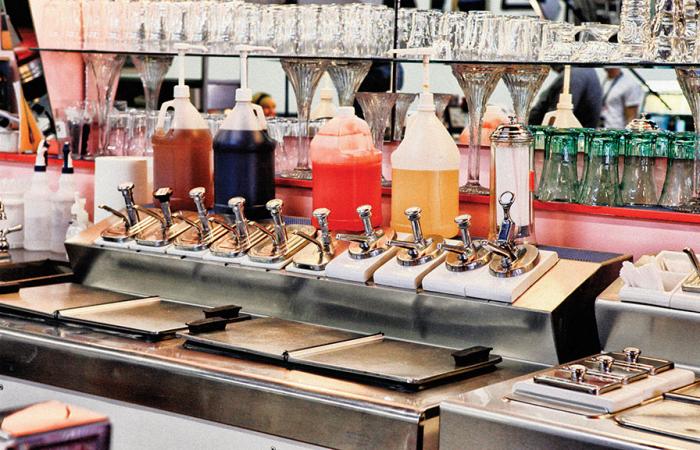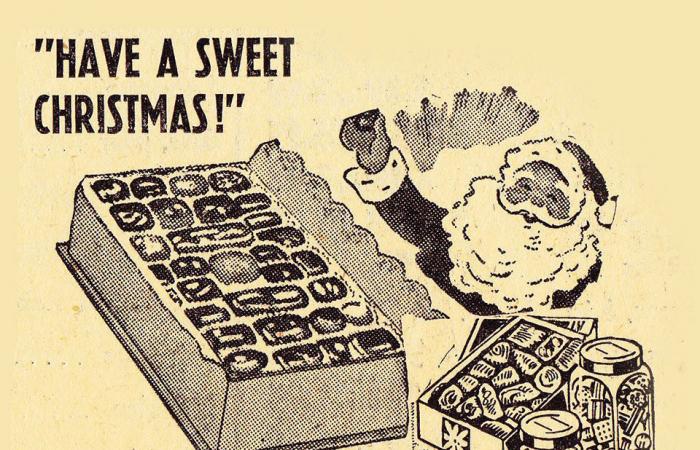“The children were nestled all snug in their beds; While visions of sugar-plums danced in their heads.” - ‘Twas The Night Before Christmas by Clement Clarke Moore - 1823
When I was little, my Dad read this rhyme to me as my bedtime story of choice from Halloween until Easter. Even though I didn’t know what a sugar plum was, but they sure sounded delicious. Years later, I found out they don’t have plums in them but are hard sugary candies shaped like plums. All the same, they’re a yummy Christmas treat.
Candy canes are another treat associated with Christmas. Accordingly, custom has it that, in 1670, the choir master of the cathedral in Cologne, Germany had “sweet stick” candies shaped like a cane made to keep the children quiet during the long Living Creche (Nativity) service on Christmas Eve. Candy canes have been associated with Christmas ever since. There is no other season more associated with candy than Christmas.
The relationship between Europeans and their sweet tooth go back centuries. Hard sugar candies were popular in Europe at least since the fifteenth century, but they didn’t come to the Lakehead until the fur traders established colonies here in the 1700s. At around this time, chocolate made its way north from Central America. Whatever the origin and whenever they came to the Lakehead, sugar candies and chocolate were very much a part of the local diet by the mid 1800s. When candy arrived at Fort William in the 17-1800s, the people there made much of it themselves. By the early 1900s, candy kitchens sprang up in the growing cities of Port Arthur and Fort William to make and sell candy, soda drinks and ice cream to the public. One very popular candy kitchen was the Central Candy Kitchen and Ice Cream Parlor at 223 Arthur St. (now Red River Road) in downtown Port Arthur. By the 1930s, candy kitchens were as popular as pizzerias are today. Many drug stores in the early to mid 20th century had a coffee bar and soda fountain. One of the most popular was White’s Drug Store established in 1912 by Angus C. White at 109 May St. When coffee breaks came into vogue, a group of young businessmen would meet at the coffee bar at White’s to discuss the issues of the day. Twenty-four years later, the coffee bar was gone, and Angus’ son Alex moved the store to the corner of May St. and Victoria Ave. for the store’s final 22 years.
The first soda drinks in the Lakehead were manufactured here by JA Barker at his Water Street plant at Prince Arthur’s Landing in 1875. It supplied candy kitchens and shops that had soda fountains. There were three bottling plants at the Lakehead by the early 1900s. The Port Arthur Bottling Works introduced us to Coca Cola in 1908. By the mid 1900s, there were bottling plants located all over Northwestern Ontario to keep up with the increasing demand for soft drinks. However, by the late 20th century, only a few plants in Thunder Bay remained. In 1992, the last two independent bottling plants were closed and sold to a large distributor. Although the way soft drinks were delivered changed, their popularity never waned.
It seems that the distribution of candy has gone much the same way as soft drinks. Candy kitchens are not as common as they were nearly a century ago, but they’re still around. Almost gone too are the long counters lined with stools to sit on where the lady behind the counter would take your order for lunch or a coffee or your favourite ice cream treat. One of my favourites was the Kresge’s counter. I’d order a chocolate milk shake – the old fashioned kind with scoops of ice cream, milk and chocolate syrup all blended together in a large steel cup and poured into a tall glass as I watched. She served me the mixing cup along with the shake because it wouldn’t all fit into the glass. And when I finished the shake, I’d happily empty the cup into my glass for that little bit extra. Those shakes were the best!
Jeanne Killens remembers when she was a girl that every time she went to the Eaton’s on Court St., she’d sit at their counter and order a root beer float. I remember eating my first Persian there. Like Jeanne, the childhood memories of the chocolates and candies that could be purchased all year round, were made sweeter at Christmas when they were shared with family and friends who came to celebrate the Christmas cheer. For Jeanne, preparations for the holiday season started in the fall. She and her mother made gingerbread snaps and short bread cookies cut into Christmas trees, snowmen and stars, and decorated with sugar balls and icing for the festive season. It was a ritual she performed every year with a delight that built up as Christmas approached. Starting in November, I would help my mother bake dozens of butter tarts, mince meat tarts and, of course, shortbread cookies. We could eat the broken ones, but the rest were put into tins for company. And when company visited, out came the baking and I wasted no time delving into it. I am sure you have your Christmas memories and rituals too.
Christmas is for children both young and old, for getting together with family and friends and for memories of those who are no longer with us. Christmas is a time when we can relive that magical world of childhood where we can see good in everyone and everything. May we carry this feeling dear in our hearts now and throughout the coming year.
So in closing may I say, and wish if I might ...
A Merry Christmas to all and to all a good night.





